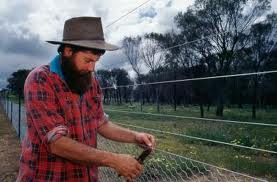 I am a forest officer from India. I want to narrate a story. No, my story is not about elephants or tigers or snakes. Those stories about India are commonplace. I wish to narrate a simple story about people, the least-known part of the marathon Indian fable.
I am a forest officer from India. I want to narrate a story. No, my story is not about elephants or tigers or snakes. Those stories about India are commonplace. I wish to narrate a simple story about people, the least-known part of the marathon Indian fable.
Humans are said to have arrived in India very early in world civilisation. Some were raised here from the seed of their ancestors; others migrated here from all over the world. Over the centuries these people occupied every inch of soil that could support life. The population of India today is 1.2 billion. Each year, India’s population increases by a number nearly equal to the complete population of Australia. Such a prolific growth of numbers is easy to explain; the fertile soil, ample water and tropical warmth of India support the growth of all life forms.
Not all numbers are great, however, and big numbers sometimes exact the price from the wrong persons.
This is my story.
I went to work in the state of Meghalaya in north-eastern India. Pestilence, floods and dense vegetation have made north-eastern India a most inhospitable place. Population is scanty by Indian standards. Life does not extend much beyond the basic chores of finding food and hearth. In the hills, far away from the bustle of modern civilisation, primitive tribal families practice agriculture in its most basic form. Fertilisers are unknown to them, so they cultivate a parcel of land until it loses its fertility, ultimately abandoning it to find other arable land. When the original parcel has finally recovered its fertility after a few years, they move back. It is a ceaseless cycle of migrating back and forth – the so-called practice known as ‘shifting cultivation’. Ginger, peas, pumpkin, brinjal and sweet potato can be seen growing on numerous slopes in the Garo Hills of Meghalaya beside the huts of the farmers built on stilts, with chickens roosting below.
When I reached Meghalaya and looked about at the kind of world I had never seen before, I admit that I found the tribal folk a little strange. They lived in a way that would have appeared bizarre to a modern community. The people did not seem to know how many centuries had passed them by. For me as a forest officer, what looked worst was that that these people appeared to have no comprehension of the value of forests for the planet. They built their huts with wood. They cooked on firewood. Most of their implements were made of wood. A whole tree would be cut and thrown across the banks to make a bridge over a stream. Above all, their crazy practice of shifting cultivation would ultimately remove all the remaining forest.
I decided my main job in this place was to save the forest from its own people, and we enforced Indian laws to preserve the forests.
On one occasion my staff saw a young local man running with an illegally obtained log of wood and started to chase him, waving their guns in the air to scare him. He ran barefoot amid dense bushes a long distance before we managed to apprehend him. I had bruises on my arms and a leech hanging from my armpit drinking my blood by the time the race was over. I admit that in my anger at the time, I wanted to impale the man to the earth at the spot where he had cut down the tree. It was not the leeches and the bruises that angered me. The tree he was carrying was (until quite recently) in perfect condition.
But Meghalaya isn’t populated solely by subsistence-farming villagers – there are also a few successful traders originally from big cities who have settled in this economically depressed region. They dress smartly and speak impeccable English. At the time, I remembered wondering how these more sophisticated types could be maintaining their relatively lavish lifestyles among the poor villagers who walked barefoot in the dense forests. On a couple of occasions I dropped in at the home of a prominent trader. He hosted me graciously in his beautiful home. I admit that I enjoyed these visits because they were my only link to the civilisation I had become used to prior to moving to Meghalaya. But I never visited the home of any tribal villager, for what could I talk to them about anyway?
Read the rest of this entry »
-34.917731
138.603034
 Today I was shocked, stunned and pleasantly (for a change) surprised. Australia has its first ‘avoided deforestation’ carbon farming project.
Today I was shocked, stunned and pleasantly (for a change) surprised. Australia has its first ‘avoided deforestation’ carbon farming project.



